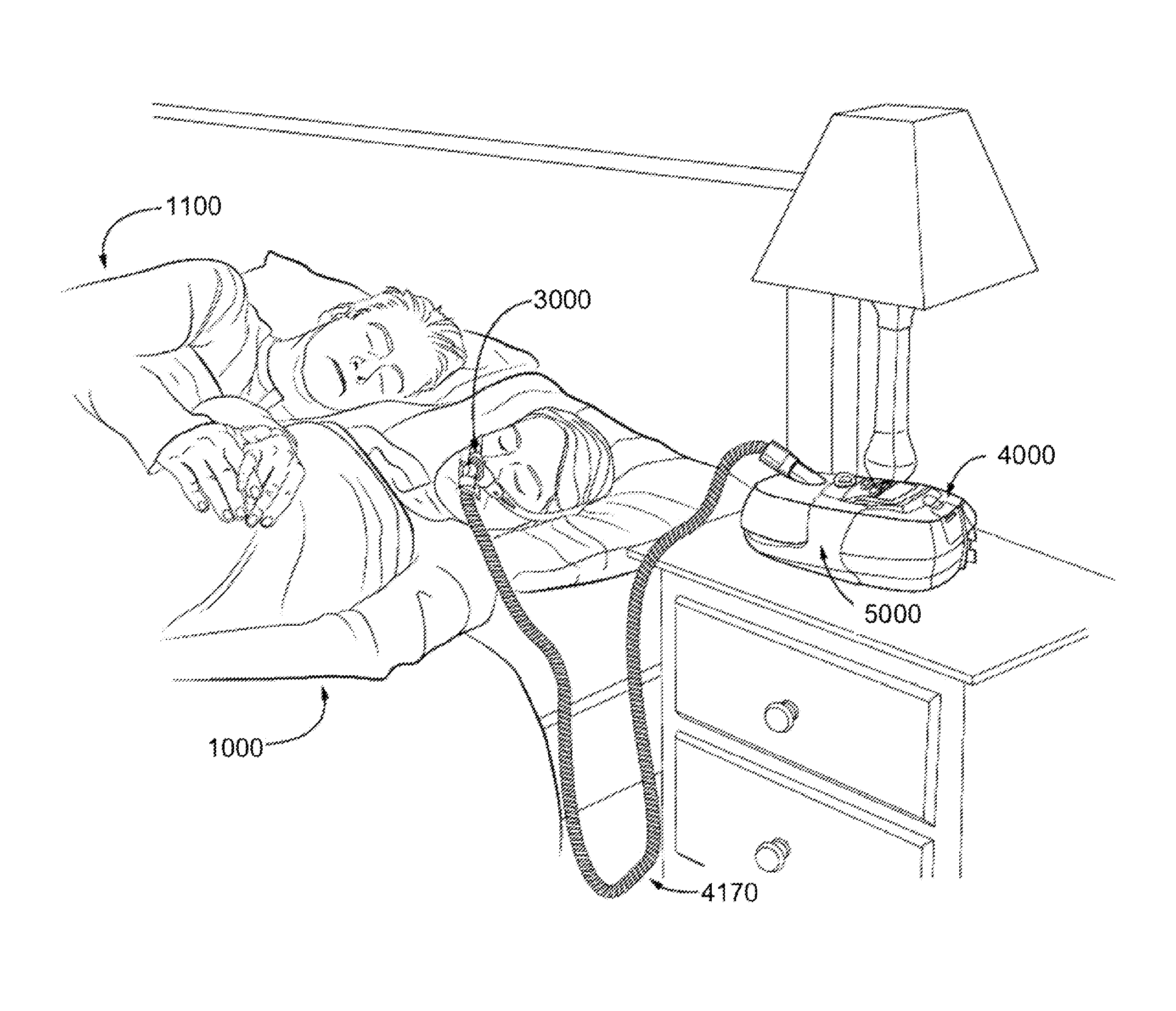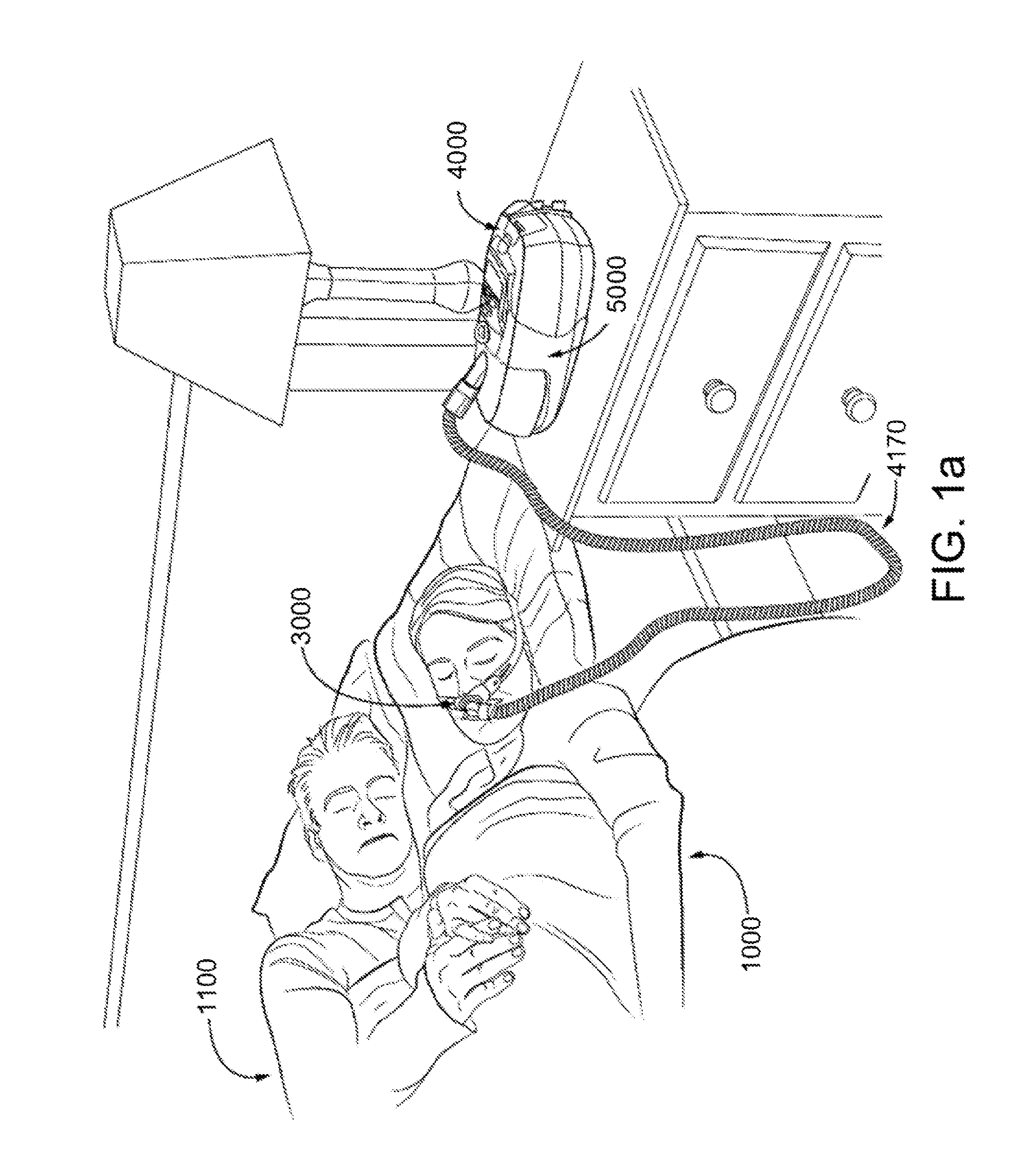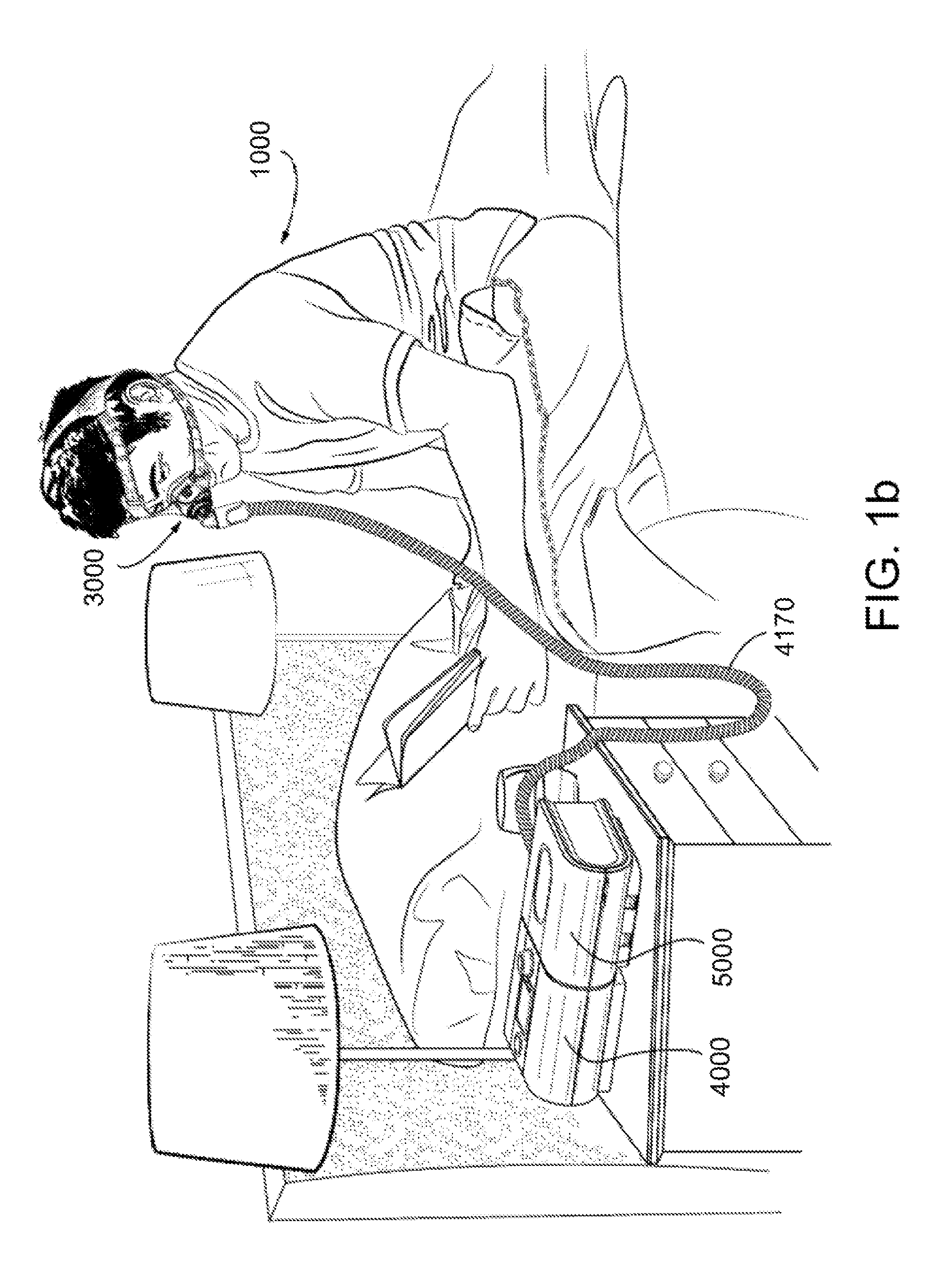Motor drive system for respiratory apparatus
a technology of motor drive and respiratory apparatus, which is applied in the direction of machines/engines, electronic commutators, stoppers, etc., can solve the problems of csr harm, excessive daytime somnolence, cardiovascular disease and brain damage, etc., and achieve the effect of reducing the pcb footprint, labor, development time, and/or the overall cost of the devi
- Summary
- Abstract
- Description
- Claims
- Application Information
AI Technical Summary
Benefits of technology
Problems solved by technology
Method used
Image
Examples
example operation
[0185]In operation, with reference to FIG. 11, the fault mitigation IC 4500 may monitor physical and system parameters of the device 4000, including among others, motor current, motor bus voltage, motor speed, pressure, flow, temperature, and system reset. Based on one or more of these parameters, the fault mitigation IC 4500 may determine whether a hazardous situation is imminent, namely, whether a fault is present. If so, the fault mitigation IC 4500 may shut down the motor 4144 to prevent the occurrence of, or ameliorate hazardous conditions that may compromise the safety of the user and / or the device 4000.
[0186]For instance, once a fault is detected, the fault mitigation IC 4500 may latch a single digital output signal at an output pin, e.g., “OUT1.” This single digital output signal may shut down the therapy device controller 4240. As a result, the motor 4144 will stop.
[0187]The same single digital output signal may be applied via a signal branch line to also interrupt the cent...
PUM
 Login to View More
Login to View More Abstract
Description
Claims
Application Information
 Login to View More
Login to View More - R&D
- Intellectual Property
- Life Sciences
- Materials
- Tech Scout
- Unparalleled Data Quality
- Higher Quality Content
- 60% Fewer Hallucinations
Browse by: Latest US Patents, China's latest patents, Technical Efficacy Thesaurus, Application Domain, Technology Topic, Popular Technical Reports.
© 2025 PatSnap. All rights reserved.Legal|Privacy policy|Modern Slavery Act Transparency Statement|Sitemap|About US| Contact US: help@patsnap.com



